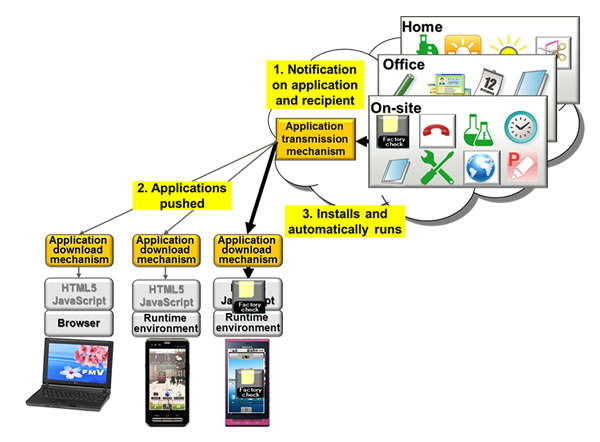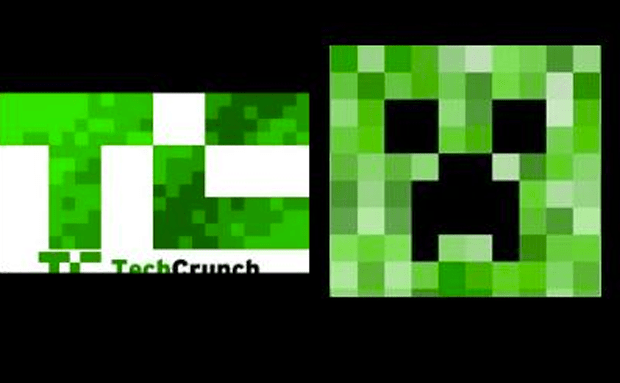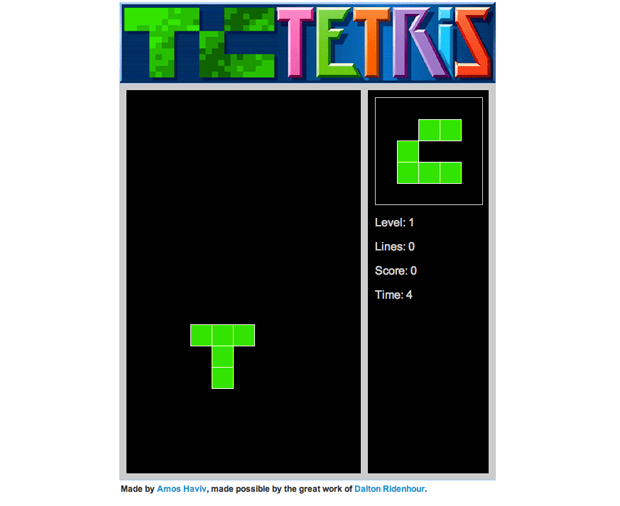CrunchGear |  |
- Autodesk Acquires Online Photo Editing Service Pixlr
- JOOR Raises $2.25 Million For Private Online Fashion Marketplace
- Live Gamer Buys GamerDNA And BrandPort To Add In-Game Ads To Monetization Platform
- With A Half Billion Pages Signed, DocuSign Launches Free Edition
- Komli Media Acquires Mobile Advertising Platform ZestADZ
- Fujitsu Tech Lets You Send Apps To Users At Specific Times And Places
- Dentsu To – Exclusively – Sell Display Ads For Skype In Japan
- Daily Crunch: On The Green
- TechCrunch Redesign Fan Art (Yes, It Exists)
- AmEx Links Up Facebook With Coupon-less Deals, And Lets Merchants Go Social
| Autodesk Acquires Online Photo Editing Service Pixlr Posted: 19 Jul 2011 05:13 AM PDT Autodesk, maker of design, engineering and entertainment software, this morning announced that it has acquired online photo editing and sharing service Pixlr. Financial terms of the transaction were not disclosed, but Autodesk says the transaction is not expected to have any impact on its recently issued guidance. Pixlr founder Ola Sevandersson has joined Autodesk. Pixlr was started in Sweden in August 2008 and offers a suite of cloud-based image tools and utilities such as photo editing tool Pixlr Editor, Pixlr-O-Matic, screengrabbing browser extensions Pixlr Grabber and one-click photo sharing tool imm.io. The company’s tools are built to enable non-professionals to create, edit, and share images online via social networking services such as Facebook and Flickr. For Autodesk, the acquisition is a way to expand its line of products for consumers with image editing capabilities. Autodesk SketchBook Pro desktop users, for example, will now be able to read and write image file formats such as PXD and exchange files while maintaining data such as layers. The acquisition is reminiscent of Google’s purchase of Picnik back in March 2010. Other alternative online photo editing services include FotoFlexer, LunaPic, Splashup and Pixenate. |
| JOOR Raises $2.25 Million For Private Online Fashion Marketplace Posted: 19 Jul 2011 04:58 AM PDT Exclusive - JOOR, a member-only online wholesale marketplace for contemporary fashion brands and boutiques, has raised $2.25 million in Series A funding in a round led by Battery Ventures with participation from Lerer Ventures, Great Oaks VC, Landis Capital, Forerunner Ventures, William M. Smith and Richard Mishaan. Led by founder Mona Bijoor, a veteran fashion buyer, the company will use the additional capital to expand internationally and grow its network of boutiques, buyers and fashion brands. JOOR creates a relatively new type of sales channel for retail fashion buyers and brands, by bringing the experience of trade shows and showrooms to a digital platform in an effort to save fashion brands and buyers a lot of valuable time, and from a ton of hassle. The B2B marketplace, which is available only to accepted members, lets fashion brands connect with independent boutiques and other wholesale buyers to communicate and transact online. Its strength is in the network. Launched in March 2010, JOOR has grown from working with 75 brands and 500 boutiques to over 250 brands and more than 7,500 boutiques. Similar marketplaces include Not Just A Lookbook, Erayo, Trunkt and Balluun.
|
| Live Gamer Buys GamerDNA And BrandPort To Add In-Game Ads To Monetization Platform Posted: 19 Jul 2011 04:30 AM PDT Live Gamer, an online marketplace for players to trade and buy video game virtual goods, is acquiring video game ad network GamerDNA and engagement advertising platform BrandPort to add advertising capabilities for game publishers. As you may know, Live Gamer’s e-commerce platform powers virtual goods merchandising, analytics, virtual item gifting, support for earned in-game currencies, item storefronts, catalog management, payments gateways, cash-in flows, and more for publishers. Live Gamer has scored a number of other notable partnerships to power micropayments for gaming companies, including a deal with gaming giant EA, THQ Sony, and Real Networks. GamerDNA is the fifth largest gamer-focused advertising network in the U.S. and Europe, reaching over 48 million total unique visitors per month worldwide. GamerDNA connects advertisers to popular gaming sites, which focus mostly on hard core gaming. Advertisers such as Blizzard, Best Buy, KFC, Ubisoft, Sony Online and Namco all have leveraged the GamerDNA network to acquire new users. BrandPort, which has been rebranded as Live Gamer Ad Elements, provides media and publisher partners with video ad serving, targeting, optimization, and reporting infrastructure. The platform will reward users who view featured daily video ads with virtual goods, content or currency. Live Gamer says that BrandPort’s video ad platform improves monetization rates of free-to-play games to upwards of 40% of total users from the typical 10% of microtransaction-only paying users. In testing the company has seen over 96% of users view all daily offered high-CPM videos, resulting in approximately $1 in incremental revenue per viewing user (ARPVU) per month. Live Gamer President and Co-Founder Andy Schneider tells us that creating the ability for game publishers to monetize off of advertising made a lot of sense and is complimentary to the company’s e-commerce platform. And the new ad offering helps retain customers through offers like rewards. These aren’t the first acquisitions for Live Gamer. In 2009, the company acquired microtransaction platform Twofish, and Korean startup N-Cash, a global microtransaction company. We sat down with Schneider for a TechCrunchTV interview, where he explains how GamerDNA and BrandPort are going to be used in the future. |
| With A Half Billion Pages Signed, DocuSign Launches Free Edition Posted: 19 Jul 2011 03:30 AM PDT Docusign, the cloud-based electronic signature platform, today announced that is has processed more than a half billion pages of “contracts, agreements and other legally binding documents”, all as part of its effort to enable businesses to go paperless in the document sharing and signing process. According to the company, this effort has saved more than 60,000 trees, and what would equate to $10 million in shipping costs. To commemorate the milestone, DocuSign has made a donation to the Arbor Day Foundation to preserve one million square feet of rain forest. DocuSign also announced today the release of the latest edition of its eSignature solution, including the first appearance of a free version. This update to platform will bring DocuSign users the ability to “tag documents, auto-save, and make use of HTML5 enhancements”, the team said, like the ability to drag and drop files into DocuSign’s envelope to send, as well as pull documents from Box.net, Dropbox, Google Docs and Salesforce. DocuSign’s new solution will also include interactive dashboards and reporting to let users know where documents stand in the review and signing process, and browser-aware localization, which will put documents in the user’s native language based on the user’s browser. Most notably, DocuSign now includes integration with social networks, allowing users to sign in with Facebook, LinkedIn, Paypal, and Salesforce. Lastly, DocuSign will be offering its users a free edition of its platform, in which they can sign up for a free account and receive 5-free “sends” (documents sent and signed) per month, with no credit card required. Because the electronic signatures company now has over 8 million DocuSigners, when Adobe entered the eSignature space last year, DocuSign welcomed the addition “as market validation”. But, yesterday, Adobe announced the acquisition of EchoSign, an eSignature solution with over 3 million users, which it plans to integrate into its document software. This could symbolize some serious future competition for DocuSign, and it’s interesting to see DocuSign’s announcements today follow so closely on the heels of Adobe’s announcement. However, Tim Gonser, DocuSign’s CEO, told TechFlash that the company still leads as a solution for enterprise customers, with “80 percent SaaS market share”. It also benefits from significant adoption resulting from a partnership and investment from the National Association of Realtors, according to TechFlash. It also helps that DocuSign raised $27 million from Scale Venture Partners, Salesforce.com, Sigma Partners, Ignition Partners and Frazier Technology in December of last year, bringing total capital raised to just over $56 million. Check out the additions here. |
| Komli Media Acquires Mobile Advertising Platform ZestADZ Posted: 19 Jul 2011 02:53 AM PDT Komli Media, a major digital media network operator in the Asian-Pacific region, this morning announced that it has acquired ZestADZ, a mobile advertising platform, expanding the suite of solutions it can offers clients to encompass display, video, search, social media and now mobile. Terms of the acquisition were not disclosed. ZestADZ is a product of a mobile marketing company called mobile-worx. The company is based in Chennai, India with offices in the United States (Los Angeles and Des Moines). Mobile-worx was founded in 2007 and is led by entrepreneur Asif Ali, who will be heading Komli’s newly formed mobile division together with VP Amit Bhartiya. ZestADZ essentially helps advertisers and agencies deliver targeted mobile advertising campaigns to drive brand awareness, generate traffic and leads, among other options, across feature phones and smartphone platforms such as iPhone, Android, and Windows Mobile. eMarketer estimates Asia Pacific mobile internet users to nearly double from 623 million in 2011 to more than 1.22 billion in 2015. At the end of 2015, it is estimated that one out of every two mobile users worldwide will reside in Asia Pacific. Within India, eMarketer pegs the mobile internet penetration at 40 million users currently, and expects it to grow to over 200 million users by 2016. |
| Fujitsu Tech Lets You Send Apps To Users At Specific Times And Places Posted: 19 Jul 2011 02:13 AM PDT I am not really sure if there are that many use cases for a solution like this, but here we go: Fujitsu has developed a “platform technology” that makes it possible to push applications and data to devices at specific times and places. Users can access these applications on smartphones, tablets or PCs until they leave the place in question or a pre-determined usage time runs up (all apps and data then get erased automatically). Fujitsu pitches a few scenarios where their solution would make sense. For example, in a business scenario, users could automatically get limited access to a company’s data when they enter a meeting room. That way, installing apps or distributing materials to each participant isn’t needed – and all data can automatically be erased once participants leave the room or building. Fujitsu plans to commercialize their technology within fiscal 2012. |
| Dentsu To – Exclusively – Sell Display Ads For Skype In Japan Posted: 19 Jul 2011 02:03 AM PDT Marketing and advertising giant Dentsu has inked a deal (PDF) with Skype to offer display ads in Japan. Under the terms of the agreement, Dentsu will serve as the exclusive display advertising partner for Skype in Japan as of July 2011, at least for advertising campaigns that are not multi-national or multi-regional in nature. In November 2010, Apple and Dentsu announced a partnership that made the latter responsible for selling iAds in Japan. Dentsu also works with Facebook and OpenX. Dentsu will start selling Skype’s digital inventory, which will appear in the “Home” tab of Skype for Windows (version 5.1 and above) with immediate effect. Dentsu and Skype stress that this is only the first phase of their relationship. According to the two companies, Skype users in Japan spend an average of 2 hours per month on Skype Home. Overall, Skype boasts an average of 170 million monthly users worldwide and roughly 30 million concurrent users at peak times as of March 2011. Ads on Skype Home are typically larger than a typical banner ad, and expand to twice its original size (and more interactive elements) upon clicking. Under the terms of the deal, the number of advertisers on Skype are limited to one per day. The interactive ads for Skype’s Windows clients were rolled out in March 2010. Skype has also partnered with Meebo in the US, Ad2One in the UK, and Ströer Interactive in Germany to sell advertising in their respective markets. Amazingly, Dentsu was originally founded back in 1901 (yes, that would be 110 years ago). It currently has close to 20,000 employees worldwide servicing some 6,000 clients. The company occasionally invests in American companies through its subsidiary cci; they’ve backed mobile ad network operator JumpTap and online video company Brightcove, for example. |
| Posted: 19 Jul 2011 01:00 AM PDT Here are some of yesterday’s stories on TechCrunch Gadgets: |
| TechCrunch Redesign Fan Art (Yes, It Exists) Posted: 19 Jul 2011 12:42 AM PDT If a website gets a redesign, and nobody hates it, is it even on the Internet? It’s been exactly a week since our redesign and the screams of agony from the tens of offended readers have finally died down. My favorite responses? Milk founder Kevin Rose’s (joke) offer to revert Digg back to Version 3 if we also reneged, investor Chris Sacca’s colorful description of our font choices and those two subsequent “Your Site Sucks” tips that spelled “Micael Arrington” and “Site Redisign” in the subject lines exactly like that. But honestly guys, seven days and the unwieldy thing is kind of growing on me — Even if because I have no actually say in what it looks like and better effing I’ve complied some of our favorites below. Some of you creatively interpreted our logo: Some of you were silly:
And some not so silly (offering genuine suggestions for improvement):
The TCFast people went all out with their New York Times, HackerNews and Google+ inspired versions:
Hilter weighed in:  And so did Crunchgear’s Devin Coldeway: This Usertesting study of non-TechCrunch readers reactions is also pretty cool, if not as artistic as the stuff readers sent in. Got any more good ones? Email tips@techcrunch.com or include them in the comments, I promise to include the best ones here. |
| AmEx Links Up Facebook With Coupon-less Deals, And Lets Merchants Go Social Posted: 18 Jul 2011 08:13 PM PDT American Express is going all in on the daily deals business, striking a deal with Facebook that is similar to the one it already has with Foursquare. Through a new Facebook app called “Link, Like, Love,” AmEx cardholders can link their cards to their Facebook accounts just like they can already link their cards to their Foursquare accounts. Once they do so they will get a dashboard of deals from brands such as Whole Foods, Dunkin’ Donuts, Virgin America, and Sports Authority. (These offers are different than Facebook Deals, which Facebook sources itself) Unlike Groupon or LivingSocial, these AmEx deals don’t require anyone to pre-purchase anything or present any coupons to merchants. One of the biggest challenges for the daily deals industry is how to measure how many offers are actually redeemed at thousands of different participating businesses. But AmEx has an advantage here in that it is already a payment network that is set up and accepted in businesses large and small around the world. All people have to do is buy the deal item with their AmEx card and they will be credited the deal amount. The Facebook twist is that the deals you see are influenced by what you and your friends “like” on the Web using the Facebook like button. Although many of the deals at launch are with national brands, AmEx is also leveraging its relationships with smaller local merchants. It is a launching a program aimed at them called Go Social which allows merchants to manage deals across both Facebook and Foursquare, with other social networks to be added in the future. Business owners will be able to create their own coupon-less deals in a self-serve manner that are triggered whenever someone with a linked account buys a deal item. Self-serve has been a challenge so far with local merchants, but AmEx can market to them through its existing channels. Go Social will also allow merchants to put their locations on social networks like Facebook and Foursquare, and track their deal campaigns across those networks. Since AmEx has all the payment information, it can track deal redemption fairly easily. Closing the offer to redemption loop is the singel biggest challenge in the daily deals space. Even Groupon Now, Groupon’s mobile app with instant deals, requires participating merchants to have iPhones and train staff on how to redeem the offers. AmEx doesn’t try to change the behavior of the consumer or the merchant, other than give them an incentive to pay with AmEx versus cash or a credit card. While it all sounds good on paper, the proof will be in the quality and density of deals that AmEx can procure. This will be a battle between local sales forces. But it looks like Groupon and LivingSocial finally have some serious competition. |
| You are subscribed to email updates from TechCrunch To stop receiving these emails, you may unsubscribe now. | Email delivery powered by Google |
| Google Inc., 20 West Kinzie, Chicago IL USA 60610 | |














No comments:
Post a Comment